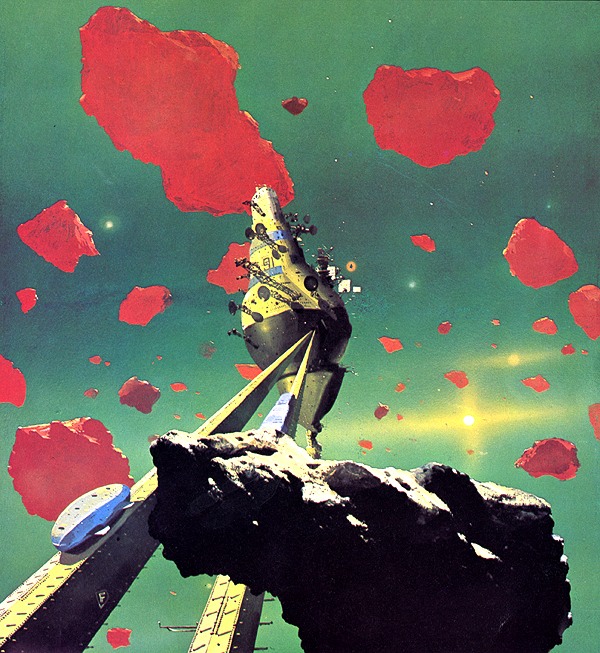Here’s a smart writeup on a new book collecting the artwork of Chris Foss, the distinctive and influential British artist whose paintings have graced the cover of many a science-fiction novel while circulating independently as quanta of outré visualization on their own. Growing up in the 1970s, I was aware of Foss more through the latter channel: glimpses of futurism in the pages of magazines like Omni and Starlog, often accompanying features on computer games (whose simple 8-bit graphics expanded logarithmically in my imagination thanks to their association with Foss’s billowing, rainbowed vistas and sensuously rounded mechanisma) or SF films then in production: Foss was one of the many artists conscripted to visualize Ridley Scott’s 1979 landmark Alien.
Among the same cohort was Ron Cobb, who, like Foss and the great but neglected John Harris, had a knack for visualizing structures of indeterminate purpose and scale, suspended against the clouds of alien worlds, the neon gasfields of nebulae, the onyx depths of outer space. Simultaneously conveying gigantic mass — humans merely implied as unobservable specks — and toylike containment within the filmed frame or printed page, the future machines envisioned by Foss and his peers were both fanciful and functional. Or as Simon Gallagher elegantly puts it:
Foss’s work is defined by that jarring oxymoron: his iconic spaceships are almost biological, and certainly monstrous, and yet, unlike anything that came before them, they are intricate in their mechanical realism. They are the convergence of fantasy and precision, and there is a fundamental contradiction within the designs that suggests both a hopeful futurism and an ominous sense of dread in the sheer size and scale of the machine monsters he creates.
The new Foss book joins a growing section of my shelf devoted to SF illustration as a form of production technology, assisting the transmedial flow of content, bridging the gaps between screenplays and feature films, design docs and finished video games, word and image and object.

